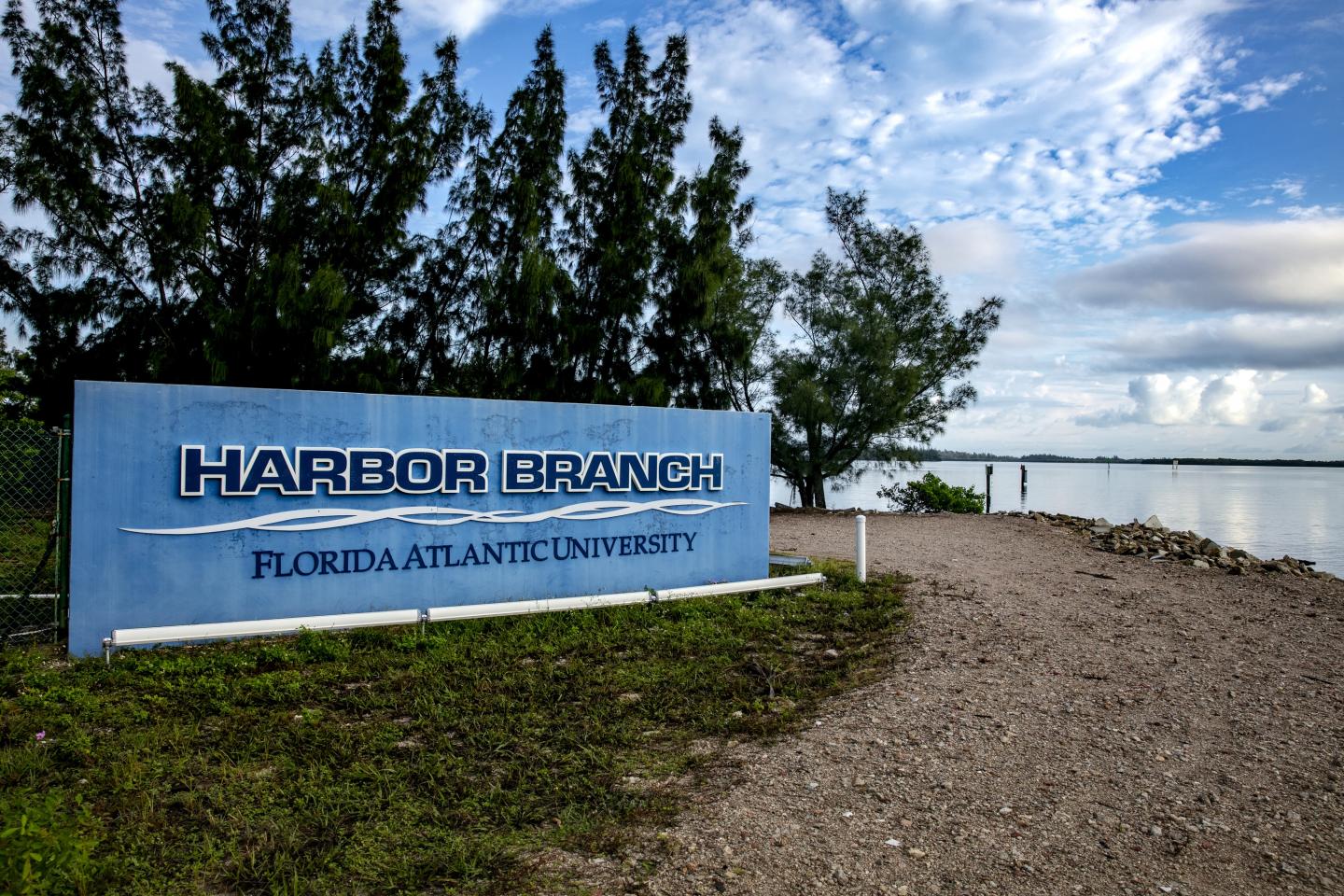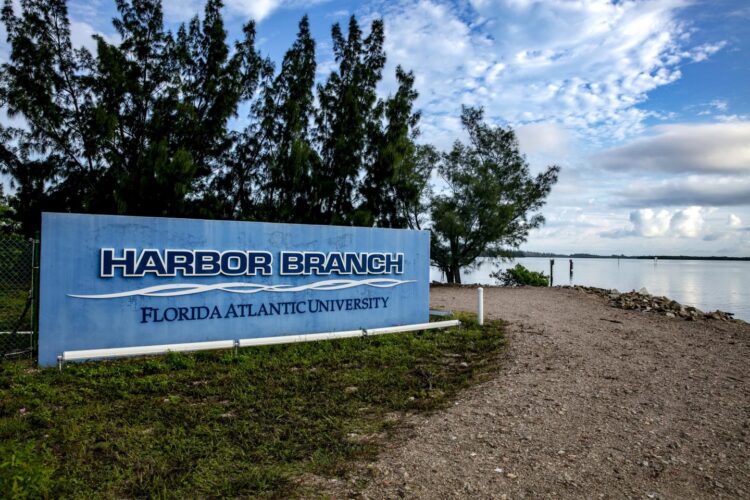FAU harbor branch scientist receives grant from Florida’s Department of Environmental Protection

Credit: Florida Atlantic University’s Harbor Branch Oceanographic Institute
With a surface area of 730 square miles, Florida’s Lake Okeechobee is the second largest lake within the contiguous United States. Over the past decade, recurring harmful algal blooms have revolved around extreme blooms of cyanobacteria, Microcystis aeruginosa. This common freshwater species is quickly becoming a global health threat, with reported increases in both the frequency and intensity of blooms around the world.
M. aeruginosa blooms produce microcystins – potent hepatotoxins, which create serious concerns for human health. They have been linked to skin disease, respiratory distress, liver damage and liver cancer in both animals and humans. These blooms also have led to local warnings regarding exposure, closure of beaches and waterways. Large harmful algal blooms of M. aeruginosa are now annual occurrences in Lake Okeechobee and can persist during most of the year because of favorable environmental conditions. These harmful algal blooms can be transported into the St. Lucie Estuary and the Indian River Lagoon (and west coast regions), where they have resulted in significant ecological and economic damage.
To address the environmental and health concerns of harmful algal blooms in Lake Okeechobee, Florida Atlantic University’s Harbor Branch Oceanographic Institute received a $2.2 million grant as a result of a competitive application process in response to the Office of Ecosystem Projects Harmful Algal Bloom Innovative Technology Program from the Florida Department of Environmental Protection’s Total Maximum Daily Loads Program. The project, “Harmful Algal Bloom Assessment of Lake Okeechobee” (HALO), will help combat Florida freshwater eutrophication, harmful algae proliferation, and ultimately protect human and ecosystem health.
Spearheaded by Jordon Beckler, Ph.D., principal investigator and an assistant research professor at FAU’s Harbor Branch and a fellow of FAU’s Institute for Sensing and Embedded Networks Systems Engineering (I-SENSE), and in collaboration with other FAU faculty as well as the Gulf of Mexico Coastal Ocean Observing System (GCOOS) and Florida Gulf Coast University, the project team will develop a comprehensive sensing and information visualization package that will augment the state’s existing monitoring programs. It will expand water, sediment, and biological measurements using innovative harmful algal bloom detection and environmental characterization technologies. This system will allow pinpointing problem areas prior to or early on when harmful algal blooms are emerging in Lake Okeechobee.
“Our project will help local scientists and water managers gain a better understanding of the ecology and persistence of M. aeruginosa blooms and toxin generation. Lake Okeechobee presents challenges for monitoring and understanding M. aeruginosa blooms given the poor optical clarity and decades of accumulated anthropogenic ‘legacy’ nutrients in sediments,” said Beckler. “We are excited to apply novel perspectives from a diverse team with a uniquely innovative toolbox. These include advanced techniques for monitoring nutrient dynamics in sediments, satellite remote sensing, an autonomous surface vehicle, fixed-location water quality and underwater holographic microscopes, and even models based on natural processes and artificial intelligence.”
As part of the project, Beckler will deploy two different types of innovative lake-bottom benthic lander packages designed in collaboration with commercial partner Analytical Instrument Systems, Inc., which will be routinely deployed to obtain measurements of legacy nutrient fluxes while providing information about the causes of the fluxes. Beckler is currently using a similar benthic lander for geochemical exploration of marine submarine sink “blue holes” off the coast of southwest Florida.
HALO will include a public web-based platform designed by the GCOOS for visualizing Lake Okeechobee freshwater harmful algal bloom intensities and extents as well as results of environmental characterization and modeling. The HALO system will provide a platform for not only tracking blooms, but will eventually provide the means to evaluate the progress of any future active bloom-mitigation efforts.
“We are very grateful to receive this significant grant from the Florida Department of Environmental Protection and for decades of support from the state of Florida for our research in marine science and technology, which benefits our citizens and beyond,” said James Sullivan, Ph.D., executive director of FAU’s Harbor Branch. “This project will ultimately serve as a site containing comprehensive data on real-time algal blooms status, with a system that is transparent, easy to use and serving a broad array of users from research scientists to educators to decision makers.”
The FAU Harbor Branch project team also includes Malcolm McFarland, Ph.D., research associate; Mingshun Jiang, Ph.D., associate research professor; Dennis Hanisak, Ph.D., research professor; and Tim Moore, Ph.D., research professor, all within FAU’s Harbor Branch; and Aditya Nayak, Ph.D., assistant research professor; and Yufei Tang, Ph.D., an assistant professor and a fellow of FAU’s Institute for Sensing and Embedded Networks Systems Engineering (I-SENSE), both within FAU’s College of Engineering and Computer Science. Partners on the project also include Navocean.
Once developed, the HALO database will become operational on the web on Jan. 1, 2021, which will be accessible to members of Florida’s Department of Environmental Protection as well as the public.
###
About Harbor Branch Oceanographic Institute:
Founded in 1971, Harbor Branch Oceanographic Institute at Florida Atlantic University is a research community of marine scientists, engineers, educators and other professionals focused on Ocean Science for a Better World. The institute drives innovation in ocean engineering, at-sea operations, drug discovery and biotechnology from the oceans, coastal ecology and conservation, marine mammal research and conservation, aquaculture, ocean observing systems and marine education. For more information, visit http://www.
About Florida Atlantic University:
Florida Atlantic University, established in 1961, officially opened its doors in 1964 as the fifth public university in Florida. Today, the University, with an annual economic impact of $6.3 billion, serves more than 30,000 undergraduate and graduate students at sites throughout its six-county service region in southeast Florida. FAU’s world-class teaching and research faculty serves students through 10 colleges: the Dorothy F. Schmidt College of Arts and Letters, the College of Business, the College for Design and Social Inquiry, the College of Education, the College of Engineering and Computer Science, the Graduate College, the Harriet L. Wilkes Honors College, the Charles E. Schmidt College of Medicine, the Christine E. Lynn College of Nursing and the Charles E. Schmidt College of Science. FAU is ranked as a High Research Activity institution by the Carnegie Foundation for the Advancement of Teaching. The University is placing special focus on the rapid development of critical areas that form the basis of its strategic plan: Healthy aging, biotech, coastal and marine issues, neuroscience, regenerative medicine, informatics, lifespan and the environment. These areas provide opportunities for faculty and students to build upon FAU’s existing strengths in research and scholarship. For more information, visit fau.edu.
Media Contact
Gisele Galoustian
[email protected]





